Betanzos, Spain: My New Favorite Galician Village
As I headed back home to Santiago de Compostela after spending Good Friday 2015 in Ferrol, I took a cross between a pitstop and a daytrip in the coastal village of Betanzos, one of the hidden treasures of northwest Spain. Santiago will always be first in my heart, but Betanzos quickly won me over as my new favorite village in Galicia.
The single-car diesel clunker I rode to Betanzos on dropped me off at what was more a clearing in the woods than a proper train station. Seeing a backpack-clad boy scrutinizing his phone’s Google Maps app, a dad who had picked up his daughter there offered to drive me in to the old town and save me a hike. In retrospect it probably wasn’t the safest decision to hop into a complete stranger’s car (sorry Mom!) but I trusted my gut and hopped in.
My leap of faith paid off, as these two kind betanceiros dropped me off in the central plaza and were fun to chat with for a couple of minutes as we circled around what were once the old town walls. In short, a lovely introduction to a lovely town.
Betanzos may be a small town of 13,000 today, but it was once capital of one of the seven provinces of the Kingdom of Galicia and even began as the Roman settlement of Brigantium. The Praza dos Irmáns García Naveira is a fitting main square to welcome any visitor to this historic town: a vast plaza bordered by grand old houses with wall-to-wall galerías or glassed-in balconies. When I visited there was a morning farmers market taking place, which tempted me to pick up some Galician onions and potatoes to take back.
Café terraces spilled out into the plaza from beneath soportales or arched covered walkways, although I dipped inside and pulled up a seat at the bar for a quick café con leche and the newspaper. Narrow alleyways branched off of the plaza, some leading down to hotspots of cozy old-man bars and trendy modern restaurants, while others wended their way down the hillside past some houses’ back porches, revealing a surprising splash of color in this granite-gray town.
The vast majority of historic churches in the region of Galicia belong to either the Romanesque style—built during the heyday of the Catholic Church’s power and highpoint of the Camino de Santiago’s popularity in the Middle Ages—or the Baroque style—built during the Catholic Counter-Reformation and full of exuberant, over-the-top designs. It’s pretty rare to stumble across a spindly, light-filled Gothic church, much less a small clutch of them fluttering about in the same city. But Betanzos surprises: it’s home to a total of three monumental Gothic churches that seem a world away from your typical Galician sanctuary.
The Church of Santiago was the first such church I came across after entering the historic center. After crossing beneath medieval carvings of St. James the Moorslayer in the door’s tympanum, I felt like I was intruding on Easter preparations once inside. Locals were busily preparing a paso or religious float for Holy Week.
The Church of Santa María do Azogue sports a stark west façade interrupted by a striking rose window that adds a bit of French charm to what was once the town’s market square only a century ago.
And literally right next door, the sprawling Church of San Francisco offers the best example of Gothic architecture in the city, complete with a luminous, soaring nave and carvings galore.
Betanzos’ main claim to fame (and destination for school field trips) lies with the Parque do Pasatempo, the “Pastime Park” located on the outskirts of town. It was established in 1914 by Juan García Naveira, a local man from Betanzos who emigrated to Argentina, made his fortune, and returned to his hometown.
One half of it consists of a typical city park: wooded meadows, creeks, and ponds, with benches and ducks to keep you occupied.
Calling the other half kitschy is an understatement. Built into successive terraces on the hillside, this part of the park’s got everything from a visual encyclopedia to a shell-bedazzled pond and even a vine-bestrewn grotto connected by tunnels and passageways.
I was first tipped off to the town of Betanzos in an episode of José Andrés’ Made in Spain in which he travels to nearby A Coruña and visits a venerable old restaurant where they serve tortilla de Betanzos—basically a very runny version of the classic Spanish dish. So half the reason I wanted to visit the town was to try Betanzos’ poca hecha or “undercooked” spin on the Spanish omelet.
A shaded alleyway led me down to Mesón O Pote, whose kitchen has won awards year after year for the best tortilla in town. My lunch consisted of an entire tortilla, a bowl of crusty Galician bread, and a glass of crisp Albariño wine. The jiggly tortilla arrived swimming in a goldenrod broth of beaten eggs, and was served with a small shovel to scoop up all the savory goodness. The verdict? Delicious. It’s not a style of tortilla I’d choose to eat every day, but I’ll take this extreme over a starchy, dried-out slice that’s been sitting beneath the glass on a bar all day.
How do you like your Spanish tortilla—runny or dry? Cast your vote in the discussion thread below!
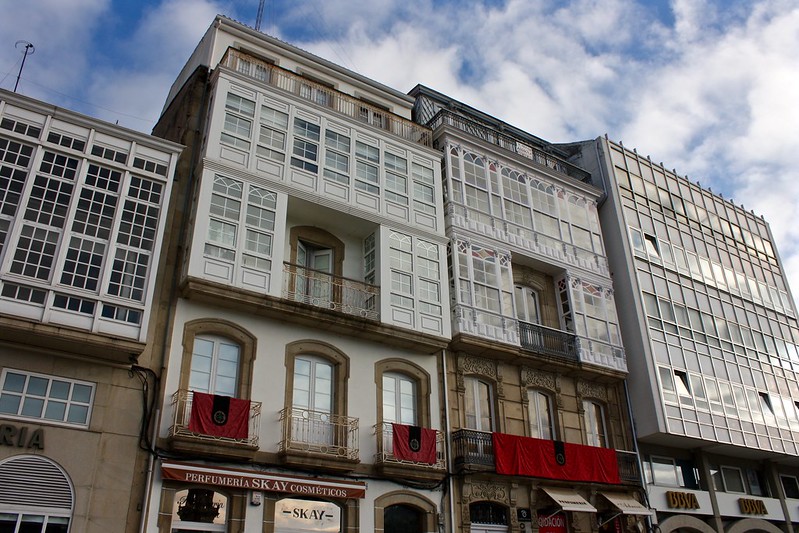
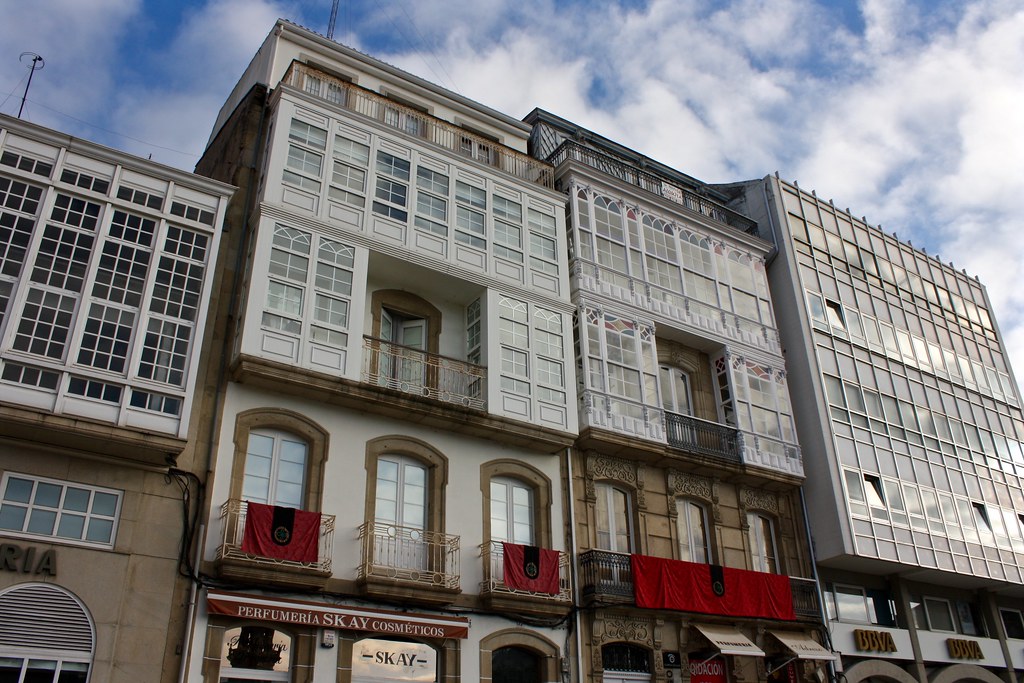 |
| Old homes with galerías |
Welcoming locals
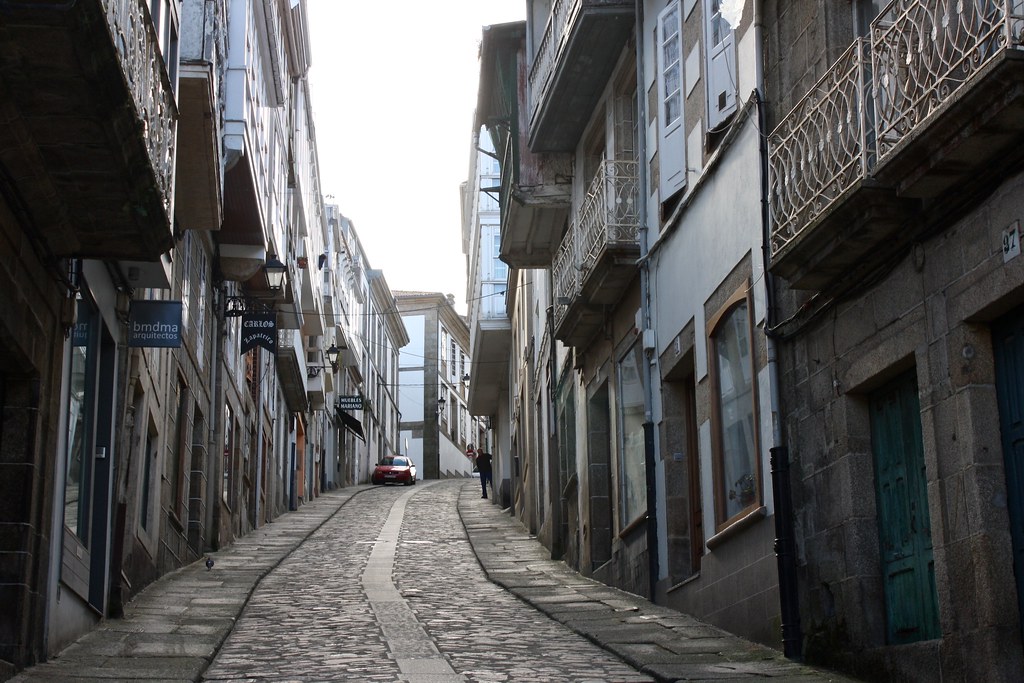 |
| In the old town |
The single-car diesel clunker I rode to Betanzos on dropped me off at what was more a clearing in the woods than a proper train station. Seeing a backpack-clad boy scrutinizing his phone’s Google Maps app, a dad who had picked up his daughter there offered to drive me in to the old town and save me a hike. In retrospect it probably wasn’t the safest decision to hop into a complete stranger’s car (sorry Mom!) but I trusted my gut and hopped in.
My leap of faith paid off, as these two kind betanceiros dropped me off in the central plaza and were fun to chat with for a couple of minutes as we circled around what were once the old town walls. In short, a lovely introduction to a lovely town.
An outstanding old town
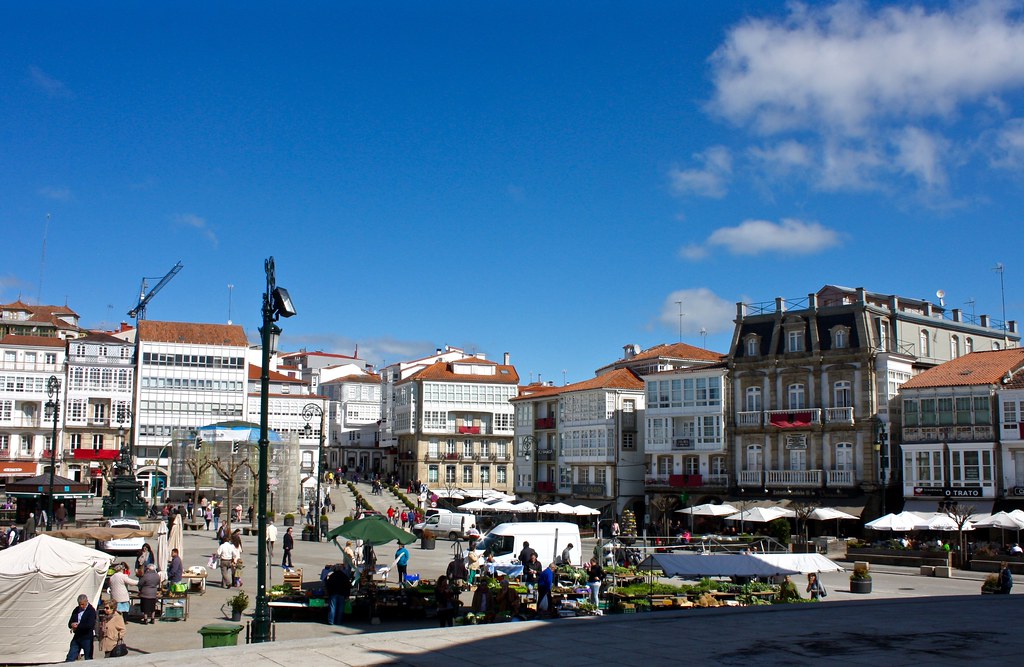 |
| The main square |
Betanzos may be a small town of 13,000 today, but it was once capital of one of the seven provinces of the Kingdom of Galicia and even began as the Roman settlement of Brigantium. The Praza dos Irmáns García Naveira is a fitting main square to welcome any visitor to this historic town: a vast plaza bordered by grand old houses with wall-to-wall galerías or glassed-in balconies. When I visited there was a morning farmers market taking place, which tempted me to pick up some Galician onions and potatoes to take back.
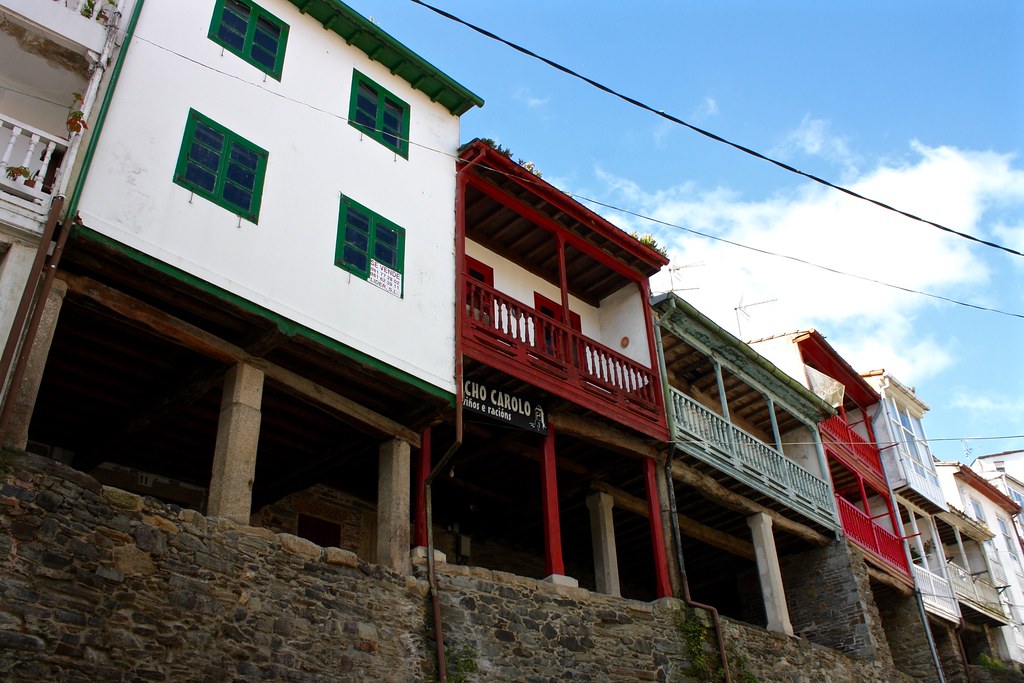 |
| Colorful back patios |
Café terraces spilled out into the plaza from beneath soportales or arched covered walkways, although I dipped inside and pulled up a seat at the bar for a quick café con leche and the newspaper. Narrow alleyways branched off of the plaza, some leading down to hotspots of cozy old-man bars and trendy modern restaurants, while others wended their way down the hillside past some houses’ back porches, revealing a surprising splash of color in this granite-gray town.
Gorgeous Gothic churches
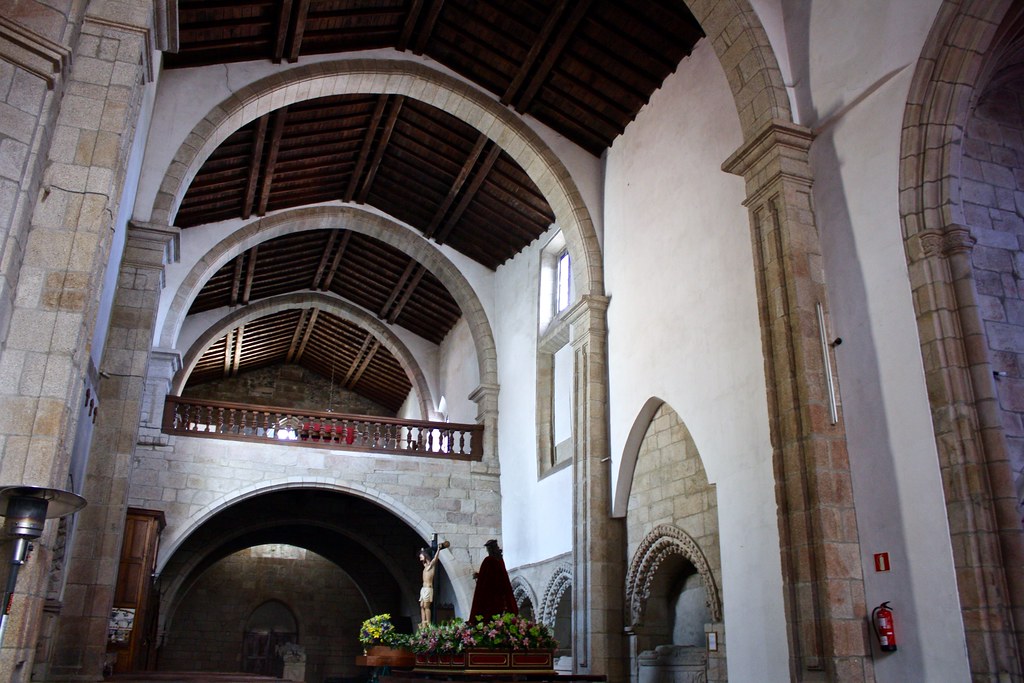 |
| Stained wooden ceilings, Church of San Francisco |
The vast majority of historic churches in the region of Galicia belong to either the Romanesque style—built during the heyday of the Catholic Church’s power and highpoint of the Camino de Santiago’s popularity in the Middle Ages—or the Baroque style—built during the Catholic Counter-Reformation and full of exuberant, over-the-top designs. It’s pretty rare to stumble across a spindly, light-filled Gothic church, much less a small clutch of them fluttering about in the same city. But Betanzos surprises: it’s home to a total of three monumental Gothic churches that seem a world away from your typical Galician sanctuary.
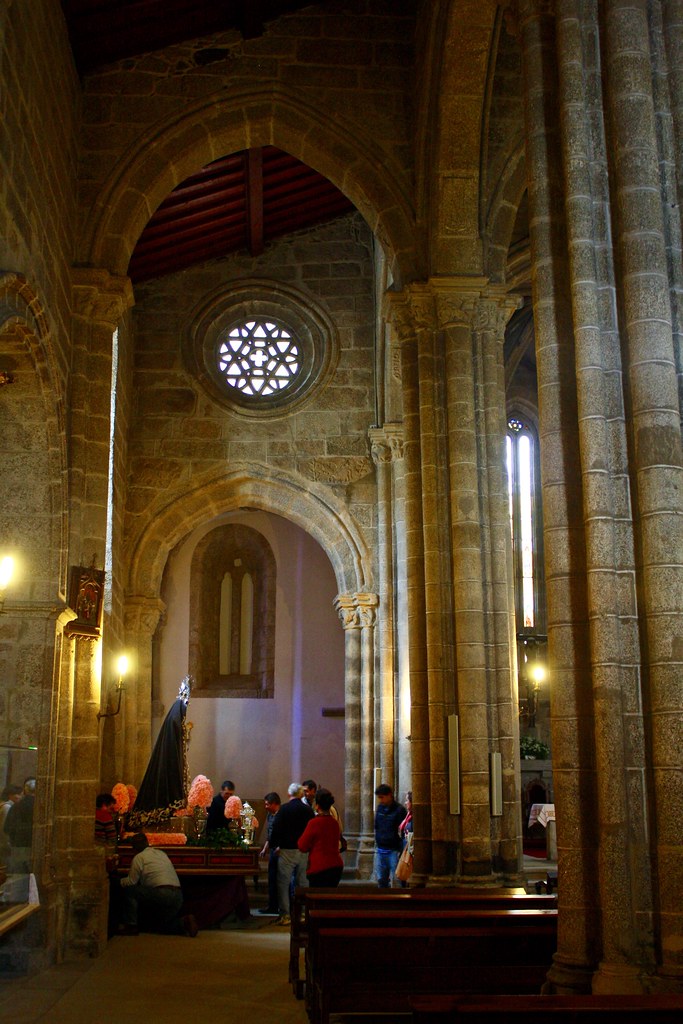 |
| Holy Week preparations, Church of Santiago |
The Church of Santiago was the first such church I came across after entering the historic center. After crossing beneath medieval carvings of St. James the Moorslayer in the door’s tympanum, I felt like I was intruding on Easter preparations once inside. Locals were busily preparing a paso or religious float for Holy Week.
The Church of Santa María do Azogue sports a stark west façade interrupted by a striking rose window that adds a bit of French charm to what was once the town’s market square only a century ago.
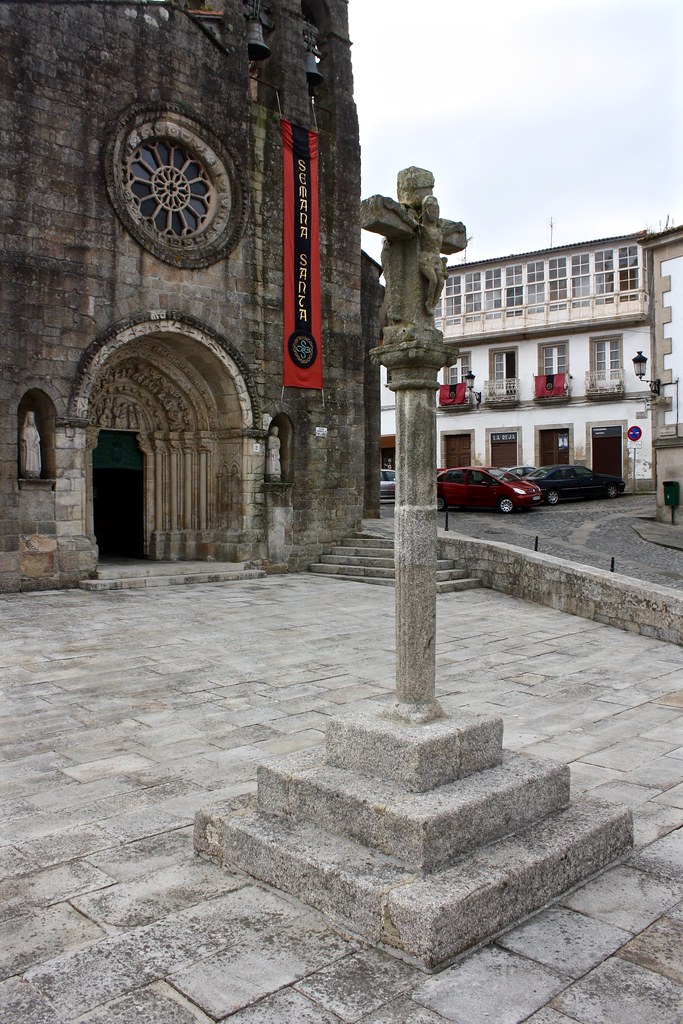 |
| A cruceiro in front of the Church of Santa María do Azogue |
And literally right next door, the sprawling Church of San Francisco offers the best example of Gothic architecture in the city, complete with a luminous, soaring nave and carvings galore.
The quirky Parque do Pasatempo park
 |
| Ducks at the park |
Betanzos’ main claim to fame (and destination for school field trips) lies with the Parque do Pasatempo, the “Pastime Park” located on the outskirts of town. It was established in 1914 by Juan García Naveira, a local man from Betanzos who emigrated to Argentina, made his fortune, and returned to his hometown.
One half of it consists of a typical city park: wooded meadows, creeks, and ponds, with benches and ducks to keep you occupied.
 |
| Inside the grotto |
Calling the other half kitschy is an understatement. Built into successive terraces on the hillside, this part of the park’s got everything from a visual encyclopedia to a shell-bedazzled pond and even a vine-bestrewn grotto connected by tunnels and passageways.
Runny tortilla
 |
| A small dinner…or a big tapa? |
I was first tipped off to the town of Betanzos in an episode of José Andrés’ Made in Spain in which he travels to nearby A Coruña and visits a venerable old restaurant where they serve tortilla de Betanzos—basically a very runny version of the classic Spanish dish. So half the reason I wanted to visit the town was to try Betanzos’ poca hecha or “undercooked” spin on the Spanish omelet.
 |
| Time to dig in! |
A shaded alleyway led me down to Mesón O Pote, whose kitchen has won awards year after year for the best tortilla in town. My lunch consisted of an entire tortilla, a bowl of crusty Galician bread, and a glass of crisp Albariño wine. The jiggly tortilla arrived swimming in a goldenrod broth of beaten eggs, and was served with a small shovel to scoop up all the savory goodness. The verdict? Delicious. It’s not a style of tortilla I’d choose to eat every day, but I’ll take this extreme over a starchy, dried-out slice that’s been sitting beneath the glass on a bar all day.
How do you like your Spanish tortilla—runny or dry? Cast your vote in the discussion thread below!
